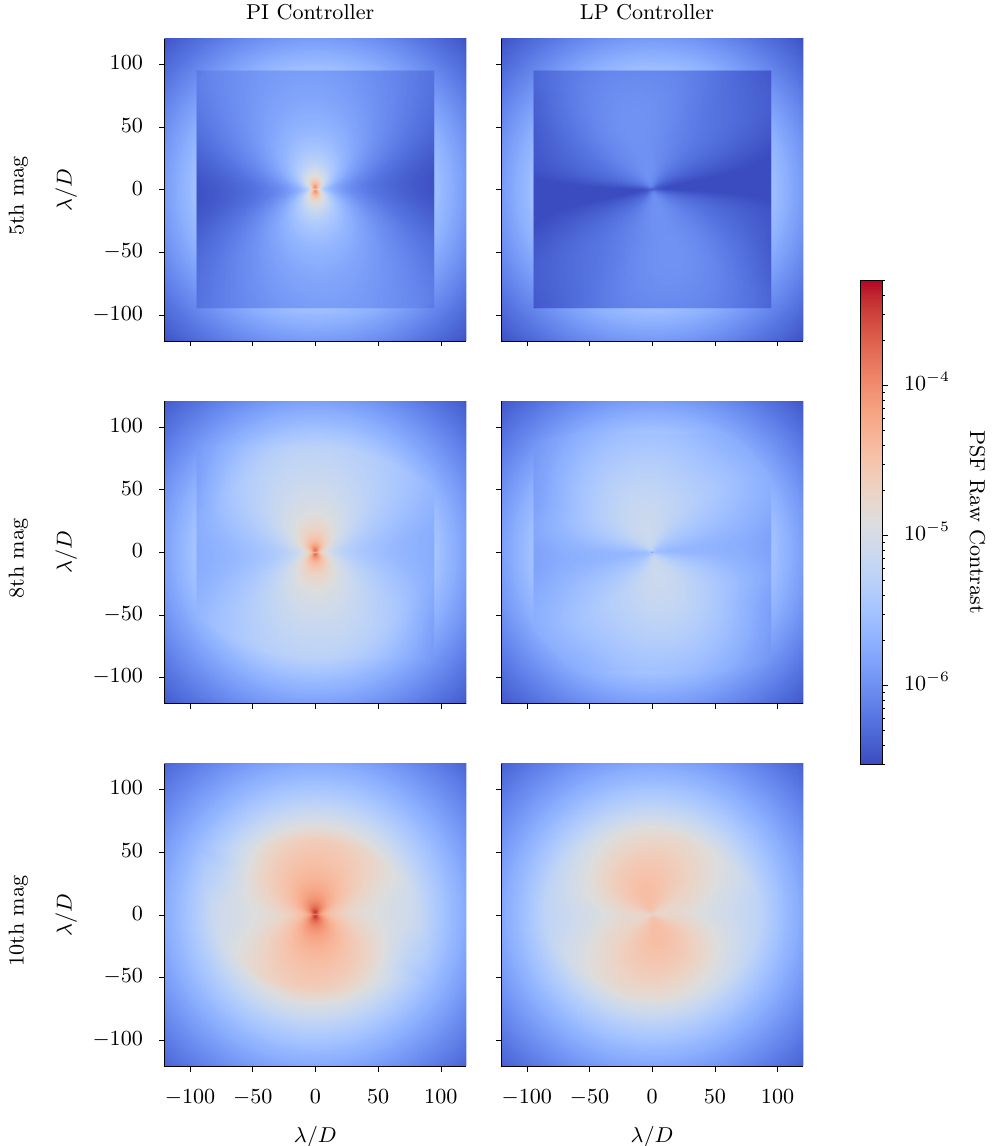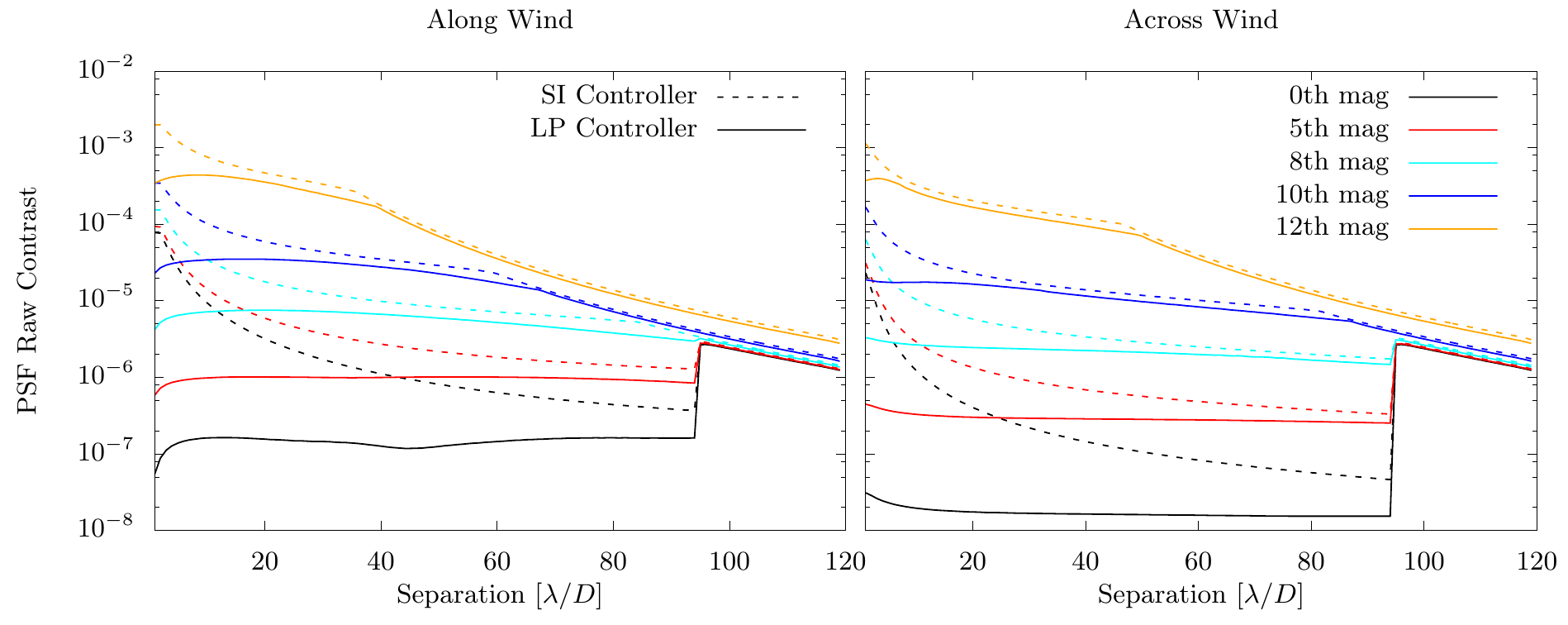
Performance Projections
Strehl and contrast with ExAO on a 25 m telescope
The Giant Magellan Telescope (GMT) is being constructed at Las Campanas Observatory (LCO). LCO is home to the twin 6.5 m Magellan Telescopes, Baade and Clay. Our team deployed the Magellan Adaptive Optics system (MagAO) to the Clay telescope in 2012, and we have since averaged nearly a month per semester observing with AO at LCO. We are now constructing a new "extreme" AO system for the Clay Telescope, funded by the NSF MRI program, called MagAO-X.
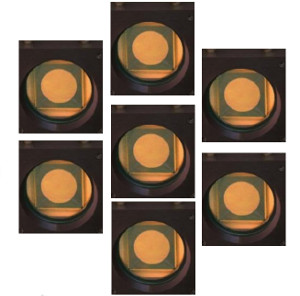 Figure 1. 7x 3000 actuator MEMS DMs.
MagAO-X: The key parameters of MagAO-X are: a 2040 actuator MEMS deformable mirror (DM), with 48 actuators across the 6.5 m pupil (13.5 cm pitch); a pyramid wavefront sensor (PWFS) with an electron multiplying CCD (EMCCD) allowing us to operate at 3.6 kHz with very low noise; an integral coronagraph, coronagraphic wavefront control system, and science cameras on the same optical table with the DM and PWFS. The MagAO-X preliminary design review (PDR) is extensively documented here, and publications about the instrument are here.
Figure 1. 7x 3000 actuator MEMS DMs.
MagAO-X: The key parameters of MagAO-X are: a 2040 actuator MEMS deformable mirror (DM), with 48 actuators across the 6.5 m pupil (13.5 cm pitch); a pyramid wavefront sensor (PWFS) with an electron multiplying CCD (EMCCD) allowing us to operate at 3.6 kHz with very low noise; an integral coronagraph, coronagraphic wavefront control system, and science cameras on the same optical table with the DM and PWFS. The MagAO-X preliminary design review (PDR) is extensively documented here, and publications about the instrument are here.
The GMT consists of 7 circular 8.4 m mirrors. If we scale the 2040 actuator MEMS from a 6.5 m to 8.4 m, we find that a 3000 actuator MEMS will give the same actuator spacing (or pitch). This forms the basis of our concept for GMagAO-X: 7x 3000 actuator MEMS DMs, one per segment, will give the same Strehl ratio on the GMT as we expect to obtain with MagAO-X on the Clay. The cartoon below shows how this can be implemented optically, with a hexagonal prism to disassemble the pupil, and then a 2nd prism to reassemble after the DM segments.
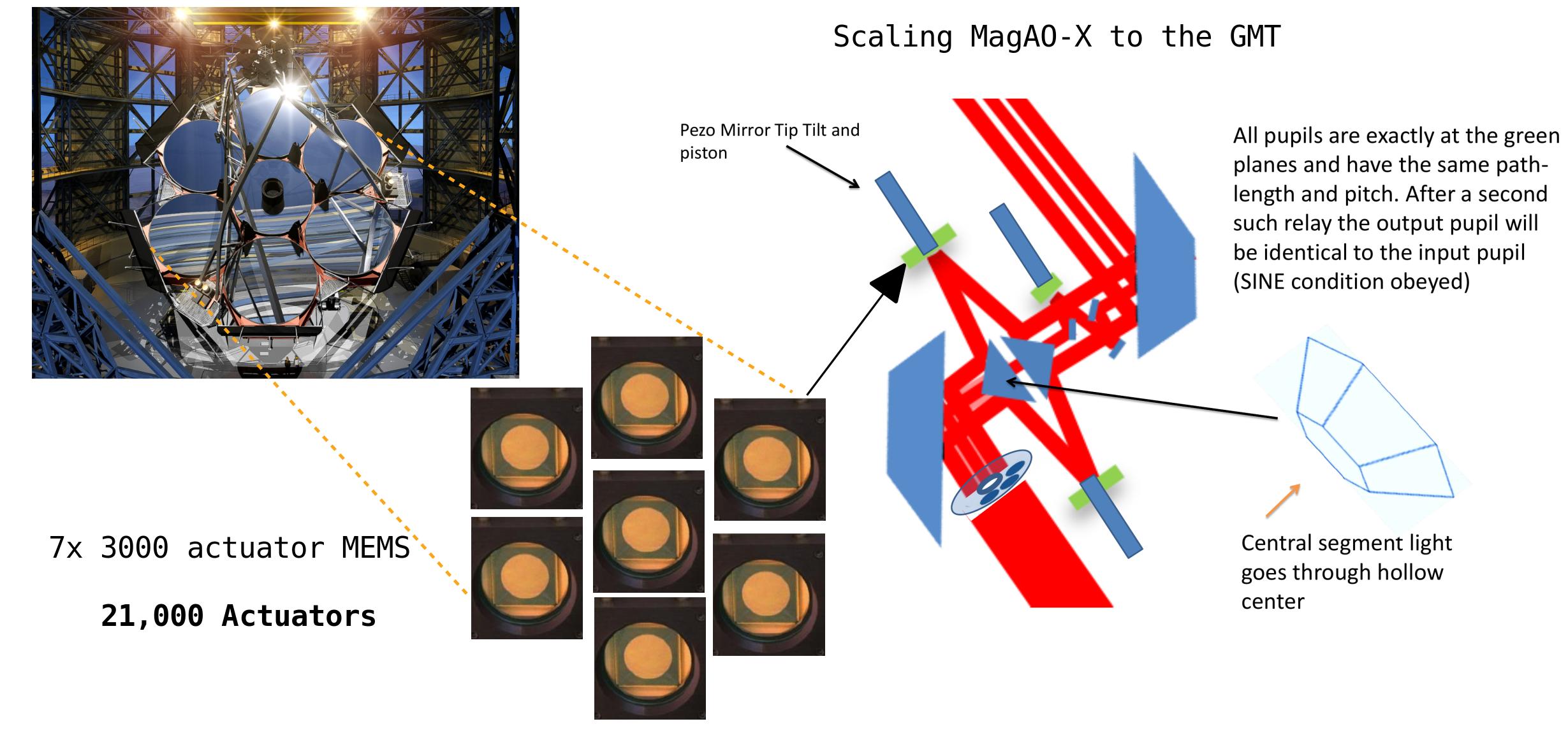
Strehl Ratio
The "Strehl Ratio" is the ratio of the brightness of the peak of an image of a star to the peak of an image of the same star with a perfect telescope (no atmosphere and no optics aberrations). An important thing to remember about AO systems is that Strehl ratio depends on DM actuator count and WFS speed, but not telescope diameter or collecting area. Because GMagAO-X will have the same actuator spacing as MagAO-X and use the same WFS detectors, it will obtain the same Strehl ratios on the same stars.
Below are performance predictions for MagAO-X@Clay from end-to-end simulations. For all of the details see this PDR document. These plots also illustrate the performance we would expect form our scaled-up concept for GMagAO-X on the GMT.
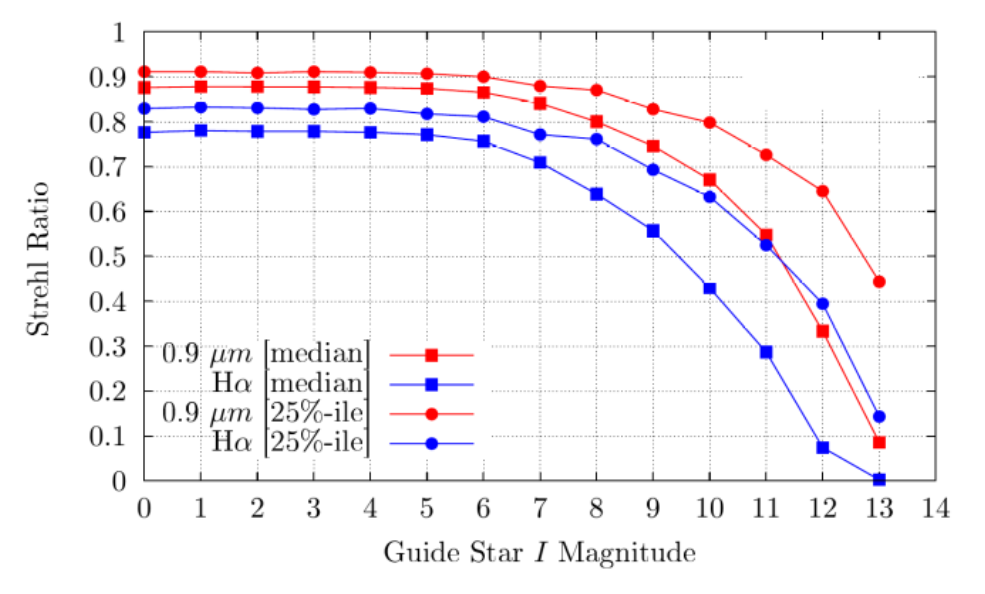

Contrast
